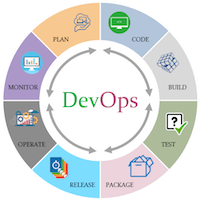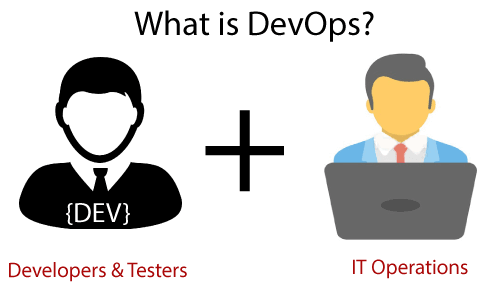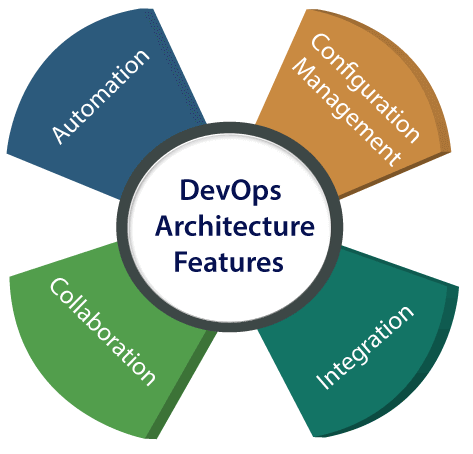DevOps Tutoriallearning manual
Published on 2023-04-20 00:10:05 · 中文 · بالعربية · Español · हिंदीName · 日本語 · Русский язык · 中文繁體

DevOps is a combination of these two words, one for development and the other for operations. This is a culture that promotes development and operational processes together.
The DevOps tutorial will help you learn the basics of DevOps and provide in-depth knowledge of various DevOps tools, such as Git, Ansible, Docker, Puppet, Jenkins, Chef, Nagios, and Kubernetes.
What is DevOps?
DevOps is a combination of two words: software development and operations. In this way, a team can handle the entire application lifecycle, from development to testing, deployment, and operation. DevOps helps you reduce the communication between software developers, quality assurance (QA) engineers, and system administrators.

DevOps promotes collaboration between development and operations teams to deploy code into production in an automated and repeatable manner.
DevOps helps improve the speed at which organizations deliver applications and services. It can also enable organizations to better serve customers and compete more fiercely in the market.
DevOps can also be defined as a series of development and IT operations with better communication and collaboration.
DevOps has become one of the most valuable business disciplines for enterprises or organizations. With the help of DevOps, the quality and speed of application delivery have greatly improved.
DevOps is just a practice or method for "developers" and "operators" to work together. DevOps represents a change in IT culture that fully focuses on quickly providing IT services through the adoption of agile practices in a system oriented approach.
DevOps is about the integration of operations and operations. Development process. Organizations that have adopted DevOps have noted a 22% increase in software quality, a 17% increase in application deployment frequency, and a 22% increase in customer satisfaction. After successfully implementing DevOps, revenue increased by 19%.
Why do we need DevOps?
Before continuing, we need to understand why we need DevOps instead of other methods.
The operation and maintenance team works in complete isolation.
After design and construction, conduct testing and deployment separately. That's why they spend more time than the actual build cycle.
Without using DevOps, team members spend a lot of time designing, testing, and deploying, rather than building projects.
Manually deploying code can lead to human errors in production.
The coding team and the operations team have their own schedules and are not synchronized, resulting in further delays.
DevOps History
In 2009, the first conference called DevOpsdays was held in Ghent, Belgium. Belgian consultant and Patrick Debois co founded the conference. In 2012, the DevOps status report was proposed and conceived by Alana Brown of Puppet. In 2014, Nicole Forsgren, Jez Humble, Gene Kim, and others released their annual DevOps status report. They found that the adoption of DevOps was also accelerating in 2014. In 2015, Nicole Forsgren, Gene Kim, and Jez Humble founded DORA (DevOps Research and Distribution). In 2017, Nicole Forsgren, Gene Kim, and Jez Humble published "Accelerating: Establishing and Expanding High Performance Technology Organizations".DevOps architecture functionality
The following are some key features of the DevOps architecture, such as:

1) Automation
Automation can reduce time consumption, especially during the testing and deployment phases. Productivity has increased, and automation has made publishing faster. This will result in rapid capture of errors, so it can be easily fixed. For continuous delivery, each code is defined through automated testing, cloud based services, and builds.
2) Collaboration
The development and operation teams collaborate as DevOps teams, and as the team develops, the cultural model has been improved. By increasing productivity, we can enhance our sense of responsibility and ownership. The team shares responsibility and closely synchronizes, thus accelerating production deployment.
3) Integration
Applications need to integrate components from the environment with other applications. The integration stage is for prostitutes to combine existing code with new features and then conduct testing. Continuous integration and testing can achieve continuous development. The frequency of publishing and microservices poses significant operational challenges. In order to overcome these problems, continuous integration and delivery have been implemented to deliver in a faster, more secure and reliable manner.
4) Configuration management
It ensures that the application only interacts with resources related to its operating environment. When separating the external configuration of the application from the source code, no configuration file will be created. Configuration files can be written during deployment or loaded at runtime, depending on the runtime environment.
The advantages and disadvantages of DevOps
DevOps may have some advantages and disadvantages in the business, such as: